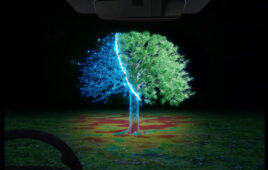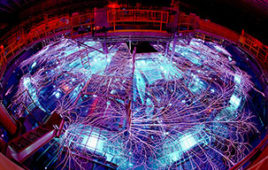 In a galaxy 300 million light-years away, a star, roughly the size of the sun, felt the overwhelming gravitational pull of a supermassive black hole. It was sucked in, swallowed by the void, before being ejected as jets of matter, traveling nearly the speed of light.
In a galaxy 300 million light-years away, a star, roughly the size of the sun, felt the overwhelming gravitational pull of a supermassive black hole. It was sucked in, swallowed by the void, before being ejected as jets of matter, traveling nearly the speed of light.
“These events are extremely rare,” said Sjoert van Velzen, a Hubble fellow at Johns Hopkins Univ. “It’s the first time we see everything from the stellar destruction followed by the launch of a conical outflow, also called a jet, and we watched it unfold over several months.”
In December 2014, a research team from Ohio Stat Univ. announced the first observations of the star being destroyed on Twitter. The post was based on observations the team made with an optical telescope in Hawaii. Seeing the post, van Velzen enlisted the aid of an astrophysics team led by Rob Fender, of the Univ. of Oxford. The team gathered X-ray, radio and optical signals from the event by using satellites and ground-based telescopes.
“The destruction of a star by a black hole is beautifully complicated, and far from understood,” said van Velzen. “From our observations, we learn the streams of stellar debris can organize and make a jet rather quickly, which is valuable input for constructing a complete theory of these events.”
Astrophysicists previously believed black holes fed a massive amount of gas, like a star, would emit a fast-moving jet of plasma from the black hole rim. This study proves that theory correct.
According to Johns Hopkins Univ., van Velzen’s team wasn’t the only group collecting radio signals from this stellar event. Another team from Harvard Univ., using radio telescopes in New Mexico, also observed the celestial phenomenon. The two teams met at a workshop held in Jerusalem in November.
“The meeting was an intense, yet productive exchange of ideas about this source,” said van Velzen. “We still get along very well; I actually went for a long hike near the Dead Sea with the leader of the competing group.”




